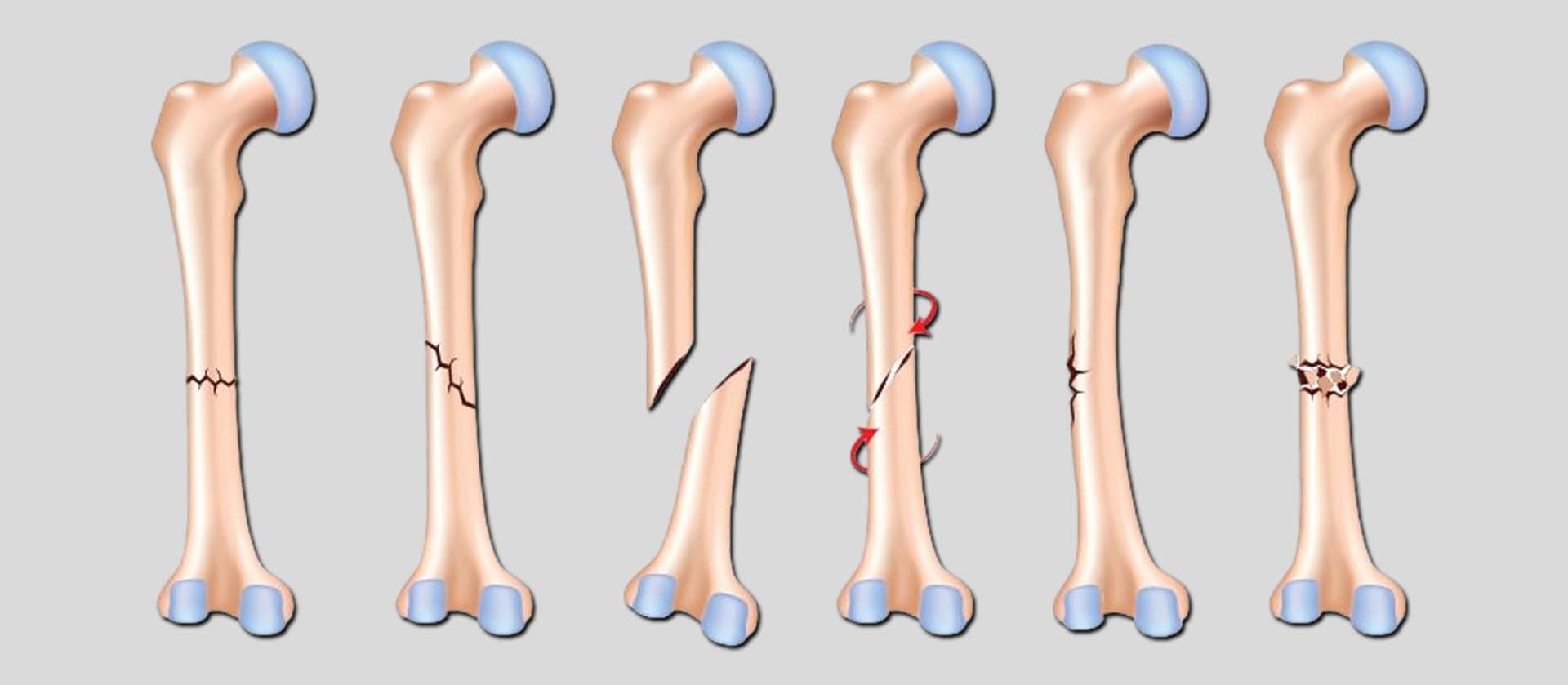Certainly, bone fractures can occur due to various causes, some of which are more common than others. Here are some of the most frequent causes:
Falls:
Falls are a common cause of fractures, especially among older adults. Falls can occur due to tripping, slipping, or losing balance, leading to fractures in the hip, wrist, or other bones.
Sports Injuries:
High-impact sports or activities with a risk of collisions or falls, such as football, basketball, skiing, and skateboarding, can lead to fractures.
Motor Vehicle Accidents:
Collisions and accidents involving motor vehicles can exert significant force on the body, resulting in fractures to various bones, particularly those in the extremities and the pelvis.
Osteoporosis:
Osteoporosis is a condition characterized by weakened bones, making them more susceptible to fractures, especially in the spine, hip, and wrist. Fractures related to osteoporosis are often called fragility fractures.
Overuse or Repetitive Stress:
Repetitive stress or overuse of a particular bone or group of bones can lead to stress fractures. These fractures are common among athletes and individuals engaged in repetitive activities such as running or jumping.
Pathological Conditions:
Certain diseases or medical conditions can weaken bones and increase the risk of fractures. Examples include bone cancer, osteogenesis imperfecta (brittle bone disease), and bone infections.
Age-related Changes:
As people age, their bones may become weaker and more susceptible to fractures, especially due to osteoporosis or falls.
Malnutrition:
Inadequate intake of essential nutrients such as calcium, vitamin D, and protein can weaken bones, increasing the risk of fractures.
Medications:
Some medications, particularly long-term use of corticosteroids, can weaken bones and increase the risk of fractures.
Alcohol and Substance Abuse:
Excessive alcohol consumption and certain substance abuse can weaken bones and increase the risk of fractures.
Osteoporosis:
This condition weakens bones, making them more prone to fractures, especially in the spine, hip, and wrist. Osteoporosis is more common in older adults, particularly postmenopausal women.
Overuse:
Repetitive stress on a bone, commonly seen in athletes or those engaged in repetitive activities, can lead to stress fractures. These are small cracks in the bone due to repeated impact or stress without adequate rest or recovery.
Pathological Conditions:
Certain diseases or conditions can weaken bones, making them more susceptible to fractures. Examples include cancer that has metastasized to the bone, bone infections, and genetic disorders affecting bone strength.
Bone Disorders:
Conditions like osteogenesis imperfecta (brittle bone disease) cause bones to be unusually fragile and prone to fractures, often with minimal trauma.
Understanding these common causes of bone fractures can help individuals take preventive measures to reduce their risk, such as maintaining a healthy lifestyle, practicing safety precautions, and seeking medical attention for underlying health conditions that may affect bone health.
Poor Nutrition:
Inadequate intake of essential nutrients like calcium and vitamin D can weaken bones, increasing the risk of fractures.
Alcohol Abuse:
Excessive alcohol consumption can weaken bones and increase the risk of fractures.
Smoking:
Smoking has been linked to weaker bones and slower healing after fractures, increasing the risk of fractures and complications.



Leave A Comment